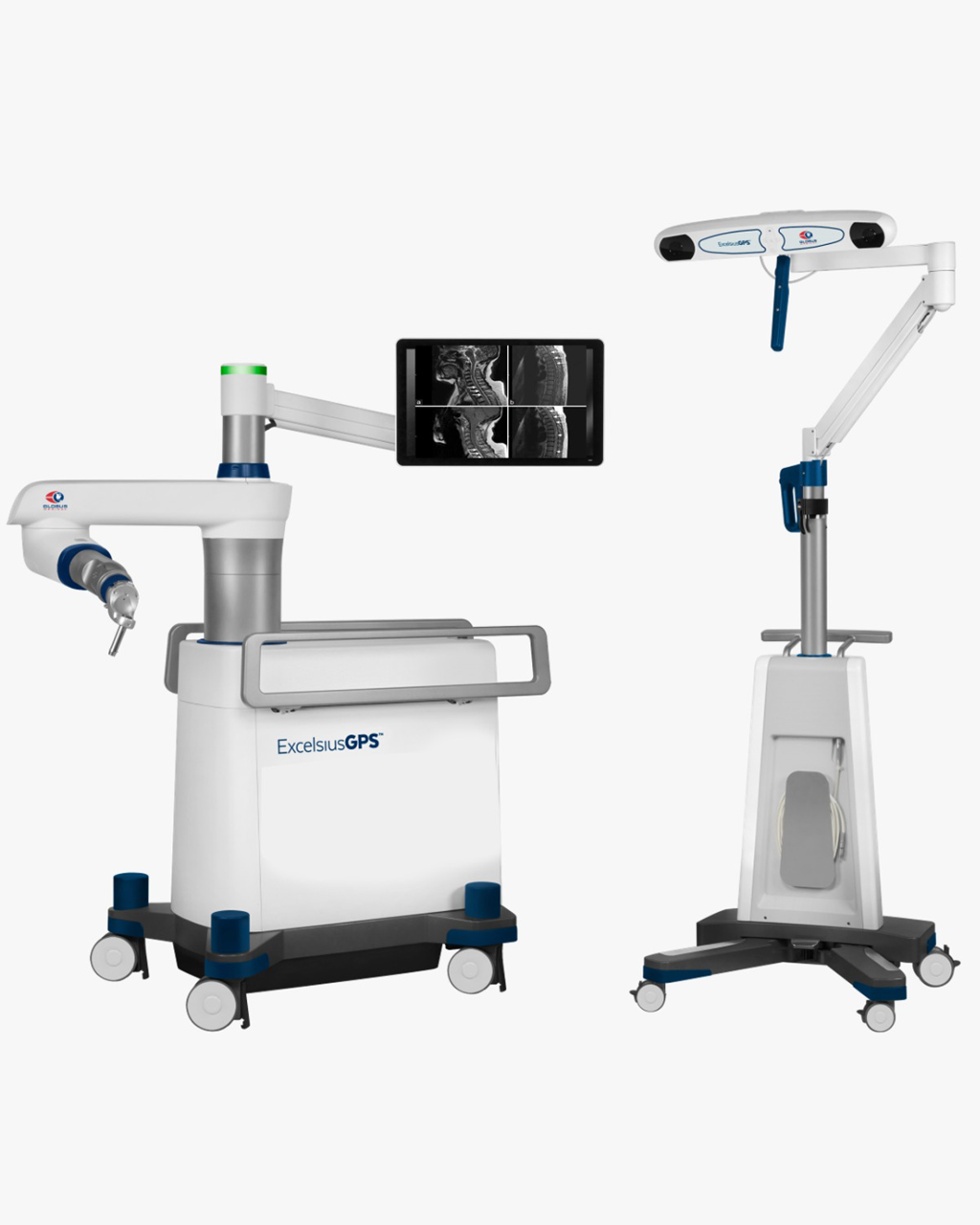
Robotic Surgery for Minimally Invasive Cancer Treatment
Introduction
Excelsius GPS Spine Surgery Robot is a next generation spine surgery robot which combines a rigid robotic arm and full navigation capabilities into an adaptable platform for precise placement in spine surgery.
Unlike conventional open surgery, surgeons performing this minimally invasive surgery (MIS) make small incisions that typically result in less pain, fewer scars, fewer complications and faster recovery
Small incisions also mean surgeons have a more limited field-of-view that can impact accuracy and safety
Usually more intraoperative X-ray images are required during MIS procedures to compensate for this limited field-of-view. So, patients can enjoy the clinical benefits of MIS without the need for additional radiation or compromising on accuracy.
Features
- Supervisory-controlled systems whereby the machine is programmed with
predetermined actions that are carried out with robotic autonomy and close surgeon
supervision. - Tele-surgical systems that afford the surgeon complete control of the motions of the
machine from a remote command station. - Shared-control models, a form of co-autonomy allowing both the surgeon and robot to
simultaneously control motions. - It combines surgeon’s understanding of anatomy with x-ray imaging to treat spine
conditions using small incisions. - Designed to improve accuracy and optimize patient care by using robotics and
navigation.
Indications and Procedures
Some conditions that are commonly corrected using Excelcius GPS spine robot are:
- Herniated disc
- Spinal deformities (like scoliosis and kyphosis)
- Spinal instability
- Spondylolysis (a defect in a part of lower vertebrae)
Advantages
- Higher accuracy
- Fewer complications
- Less postoperative infections
- Smaller incisions meaning lesser scarring and quicker healing
- Shorter duration of surgery

